I’ve been passionate about utilizing mentor texts ever since I was an early career teacher. My master’s action research project focused on mentor texts. I’ve taught graduate courses on using mentor texts. I’ve written a book about teaching with mentor texts. I’ve done countless presentations about using everything from published picture books to student-written pieces as mentor texts. So when we were spitballing ideas for an early November podcast and Melanie suggested mentor texts, I jumped at the opportunity to dedicate an episode to it!
If you’ve listened to that episode, “Extending the Power of Mentor Texts,” then you know that it’s divided into two distinct parts. The first part felt like a “Mentor Texts 101” course, while the second part was a more advanced course about mentor texts (i.e., what else you can do with published picture books beyond teaching typical craft moves to students.) If you haven’t listened to that episode yet, then you might want to listen to it before scrolling further on this post.

Extending the Power of Mentor Texts: A Digging Deeper Dialogue – Two Writing Teachers Podcast
I wanted to take you on a deeper dive into ten of the newly published picture books I shared during the episode. Thanks to the generosity of each book’s publisher, you can peek inside each book and be entered into A GIVEAWAY TO WIN ALL TEN BOOKS! (All you’ll need to do is leave a comment at the bottom of this post about how you use mentor texts in your classroom and have a U.S.A. mailing address.)
MENTOR TEXTS 101
Bake, Make & Learn to Cook Vegetarian: Healthy and Green Recipes for Young Cooks by David Atherton and Alice Bowsher (Candlewick Press – Released on 11/8/22.)
On the surface, this is a vegetarian cookbook. However, after I oohed and aahed at the illustrations that accompanied each step of every recipe, I realized this would be an exquisite mentor text to use for how-to or any kind of step-by-step writing.




Hana’s Hundreds of Hijabs by Rezeena Omar Gutta and Manal Mirza (Barefoot Books – Released on 9/20/22.)
This book can be used to teach students about hijabs and the bold fashion statements women can make with them. When I read it like a writer, I saw noticed all of the places where the author played with punctuation and created dialogue using speech bubbles.




Little Guides to Great Lives: Frida Kahlo by Isabel Thomas and Marianna Madriz (Laurence King Publishing – Released on 6/28/22.)
This book is one of the books in the Little Guides to Great Lives series, which are small-format guides for young children about inspirational figures from history. This is a book to reach for if you want to teach students how to write a hybrid text – one that blends narrative and informational writing – in an exquisite way. The story of Kahlo’s life unfolds across the pages as a rich story, with rich illustrations and quotes from Kahlo throughout the text. Plus, there are the typical informational features you’d expect (e.g., content-area vocabulary, glossary, timeline) in this text.

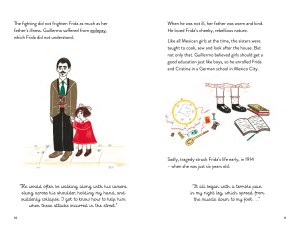
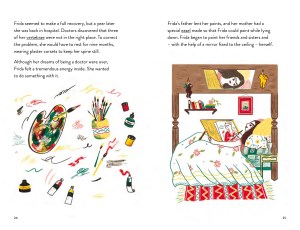

Only the Best: The Exceptional Life and Fashion of Ann Lowe by Kate Messner, Margaret E. Powell, and Erin K. Robinson (Chronicle Books – Released on 10/18/22.)
Biographies have evolved from the dry texts I read as a kid. Only the Best is an example of a biography that moves seamlessly through time to help readers envision the many parts of the life of Ann Lowe, who became the first nationally known Black fashion designer whose designs were sought after by members of elite society. Using a mentor text like this will help students craft biographies with both depth and voice.
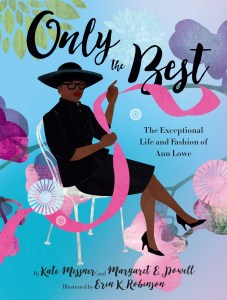



Puffin by Martin Jenkins and Jenni Desmond (Candlewick Press – To be released on 11/15/22.)
I’m always on the lookout for informational texts with an inviting teaching tone. Puffin delivers! This book takes this seabird’s lifecycle and helps readers to envision it clearly by providing a variety of interesting details and facts. There are many things young writers will want to emulate, such as the fact inserts and interjections that are in a different font, in their own writing.
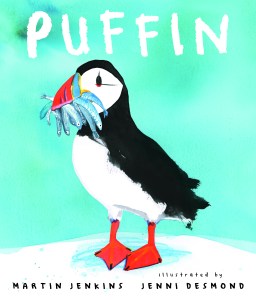
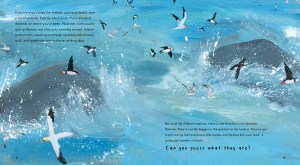

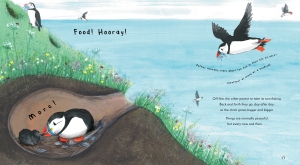
MENTOR TEXTS 202
CREATING CHARACTERS WITH DEPTH – I used to be the kind of person who thought it was easier to teach about complex characters in reading than in writing. As I read more myself (I was late a late bloomer as a reader!), I realized that I had to do a better job of helping kids create realistic characters who had depth. One way we can do this is by teaching full-class minilessons. However, there are some students who will need more than a few minilessons to do this well. Some students can benefit from a course of study on developing three-dimensional characters who jump off of the page. I’ve identified three books A Person Can Be…, What Are You? and What’s Your Name? that you can use during a course of study on creating complex characters.
Here’s a bit more about all three books + peeks inside.
A Person Can Be… by Kerri Kokias and Carey Sookocheff (Kids Can Press – Released on 10/4/22.)
If you’ve been walking through life, then you know human beings are complex. Just as people are complex, so are the characters in the books we read and in the stories we write. Opposites are possible and a book like this can give students ideas to expand the way they craft their characters.
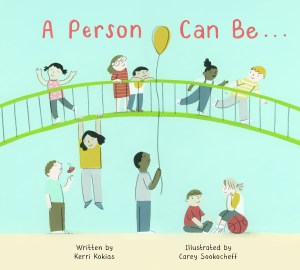


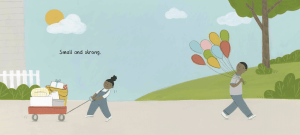
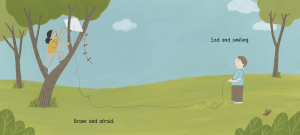
What Are You? by Christian Trimmer and Mike Curato (Roaring Book Press – Released on 10/18/22.)
As a Jewish kid who grew up in schools where I had very few Jewish classmates, I was often asked to explain my background. Most of the time my classmates and I realized we had more in common than we had that was different. However, there were always a few kids who had heard stereotypes about Jews that assumed I fit into that mold (and as a result tried to “other” me). Due to my experiences, I related to this book, which will help kids break down stereotypes and biases. It’s my hope that books like this can lead to important conversations about identity, so bias and assumptions about people don’t even stand a chance to come out in students’ writing. (There are excellent conversation starters in the back matter of this book that can help facilitate these conversations.)


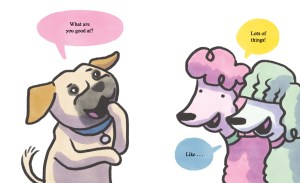
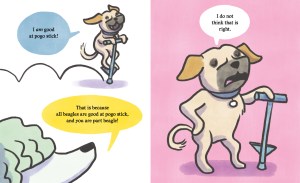
What’s Your Name? by Bethanie Deeny Murguia (Candlewick Press – Released on 11/8/22.)
My husband and I thought deeply about our son’s name prior to his arrival. Most parents do. Therefore, we want students to be intentional about naming the characters in their writing. Rather than just providing lists of names (or baby name books), this book will help young writers think deeply about the way names allow us to meet, greet, warn, question, and even taunt each other. This book, which seems simple on the surface, is actually quite nuanced, which makes it an important book to include in a character development course of study.

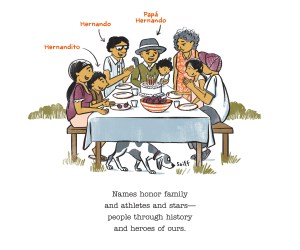
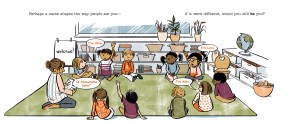
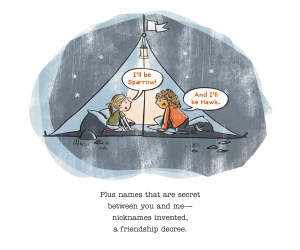
CONTENT AREA POETRY – Lynne Dorfman and I crafted narrative, informational, and opinion writing units of study when we co-authored JUMP INTO WRITING. From Lynne, I learned that nonfiction poetry is a vehicle to help kids communicate what they’ve learned about a topic in poetic form. While there are many mentor texts you can use for this purpose, here are two new releases – Copycat: Nature-Inspired Design Around the World and Counting in Dog Years and Other Sassy Math Poems – that have caught my eye.
Copycat: Nature-Inspired Design Around the World by Christy Hale (Lee & Low Books – Released on 9/20/22.)
Pictures of plants and animals sit alongside photos of designs and inventions. Each page spread includes a short piece of information about each design or invention along with a tanka, a short poem, about each one. The writing is exquisite and just inspires one to grab a notebook and write a tanka. Of course, tankas are challenging so there’s back matter that explains how to write them, along with information about a sophisticated craft move that explains how this book used the third line of each poem to serve as a pivot point. This book can easily be used to breathe new life into content-area writing.



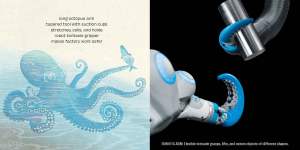
Counting in Dog Years and Other Sassy Math Poems by Betsy Franco and Priscilla Tey (Candlewick Press – Released on 10/11/22.)
If you try to avoid writing at all costs during math class (Confession: I rarely had my students write more than a complete sentence to answer a word problem!), then it’s time to bring some nonfiction poetry into the classroom. This is a delightful collection of math poetry that will be sure to inspire your students – one poem at a time – to showcase their understanding of mathematical concepts by writing a poem about them.

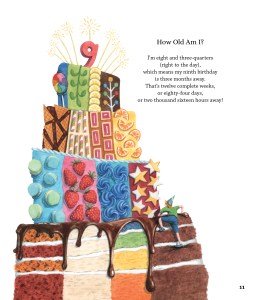

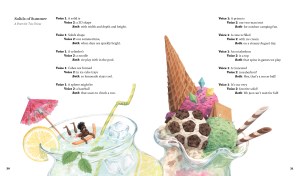
Melanie and I also talked a bit about how to use mentor texts to enhance the writing of setting details. In a future post, I’ll curate a list of books for this purpose. But for now, I hope you’re inspired to infuse some of these new mentor texts into your writing workshop and/or content area writing.
Remember, leave a comment about how you use mentor texts in your classroom and/or how you can envision using some of these books in your classroom and you may just win them all!
Giveaway Information:
- This giveaway is for a copy of each of the above-mentioned books. Many thanks to Barefoot Books, Candlewick Press, Chronicle Books, Kids Can Press, Laurence King Publishing, Lee & Low Books, and Roaring Book Press for donating a copy of each of these books for one lucky reader.
- For a chance to win these ten books, please leave a comment about this post or how you use mentor texts by Wednesday, November 16, 2022 at 11:59 p.m. EST. I’ll use a random number generator to pick the winners, whose names I will announce at the bottom of this post, by Friday, November 18.
- NOTE: You must have a U.S. mailing address to enter this giveaway.
- Please be sure to leave a valid e-mail address when you post your comment, so I can contact you to obtain your mailing address if you win. From there, my contacts at each of the above-mentioned publishers will ship your books out to you. (NOTE: Your e-mail address will not be published online if you leave it in the e-mail field only.)
Comments are now closed. Many thanks to everyone who commented about the ways they’re using mentor texts to enhance the teaching of writing. Karen Amador’s commenter number was picked using a random number generator so she’ll receive the books.

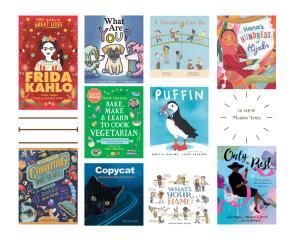

Always enjoy new recommendations for mentor texts to expand our world of what writing can be!
LikeLike
Thank you for sharing! These texts look very insightful and engaging for young readers!
LikeLike
These are great new titles! I need to work on using mentor texts more often with a better system.
LikeLike
Thank you for sharing these mentor texts. I can’t wait to read and try them out with our students.
LikeLike
My goal is to use mentor texts more effectively!
LikeLike
I love to use mentor texts during Language Workshop and span it out across the week digging deeper into elements we can learn from the book, author, and illustrator ! Can’t wait to read the Puffin book…
LikeLike
I’m always on the look out for titles to recommend to the teachers I work with! Mentor texts are such a powerful way to support writers! Thank you for always posting relevant and meaningful posts. We appreciate it!
LikeLike
Thank you for some new ideas for mentor texts. I would love to see more of this in the future.
LikeLike
My school is big on mentor texts, but clings to the ones they know. One way I’m trying to break that cycle as a librarian is to talk up text sets using known mentor texts. Showing not just 1, but 2+ books on a topic or teach point can really show the power of author choice in such an accessible way. So if the teach point is dialogue, showing an old fav along with _What Are You_ makes this easier for teachers to open up and enriches student choices as well.
LikeLike
If this post doesn’t get you excited to teach writing, I don’t know what would!
LikeLike
A cookbook and math poetry! You have grown my thinking about mentor texts! Love the podcast as well!
LikeLike
This is a great list of books that I haven’t heard of before. I will definitely be adding to my collection. I’m loving the podcast too!
LikeLike
I use mentor texts and purchased your book and craft moves. I use craft moves in my writing fourth grade class. I purchased all of the picture books in your craft moves book, nonfiction and fiction. I am looking forward to using some of the picture books you mentioned as part of my instruction. Thank you again for your podcasts.
LikeLike
I’m delighted you’ve found Craft Moves helpful for you and your students! Thanks for mentioning it (and the podcast) here. 🙂
LikeLike
Awesome and inspiring. I love the idea of using rich, meaningful and accessible mentirs for ALL of my 8th graders. I cannot wait to incorporate nonfiction poetry to augment our research and argument reading/writing units!
LikeLike
mentors, sorry!
LikeLike
I was so excited to read your post and be introduced to newly published picture books. We use picture books and poetry in all of our professional learning opportunities and we are always looking for new books to introduce our teachers to. Our district is currently diving deeply into equity work and your suggested books would be great conversation starters.
LikeLike
I’m saving this post! I use mentor texts throughout my literacy block and often in science and social studies as well. Thank you for letting us know about these new books and giving a chance to win as well!
LikeLike
I’m loving the podcast! I’m amazed at how much I’ve been able to implement into my writing workshop so quickly. I look forward to checking out these mentor texts Thank you!
LikeLike
Wow! For some reason the cook book as a mentor text is revelatory to me! These books look absolutely delightful. I use mentor texts all the time in my classroom–to examine how authors share information and meaning, affect us as readers, and we try to apply what we’ve learned in our writing. These books just look so incredible.
LikeLike
So excited to share “A Person Can Be” with my students.
LikeLike
I love looking for new mentor texts to use in my classroom and engage my students! This was perfect! Thank you!
LikeLike
We love new read alouds at my school nothing better than an awesome new book. Can’t wait to use these as mentor text in writing and appreciate the blurb on ways to include them.
LikeLike
I’m always looking for new mentor texts to use with my students. Thank you so much for sharing. I will definitely be looking for these titles.
LikeLike
Great post! I would love to utilize these new mentor texts to create conferring and small group toolkits with the teachers I am currently working with!
LikeLike
I’ve used Mentor Texts for ages for all the “basic” moves and skills. The poetry books you highlight here sound fantastic for making poetry accessible for students and easily incorporated into other parts of the day. And teaching for character names – can’t wait to try! Thanks.
LikeLike
This is an exciting list. I see great potential with these mentor texts in my second grade room. I use mentor texts regularly in reading and writing instruction, and this year I’m trying to better infuse them into small group and even individual work with writers. My students are more successful with making some new moves in their writing, and it makes instruction even more personal to them. Thanks for the ideas! (Also, I love your podcast—much appreciated.)
LikeLike
Thank you for sharing these wonderful new book! I love the variety you provided. I can see where these books could be used for identity work, nonfiction craft moves and poetry to name a few.
LikeLike